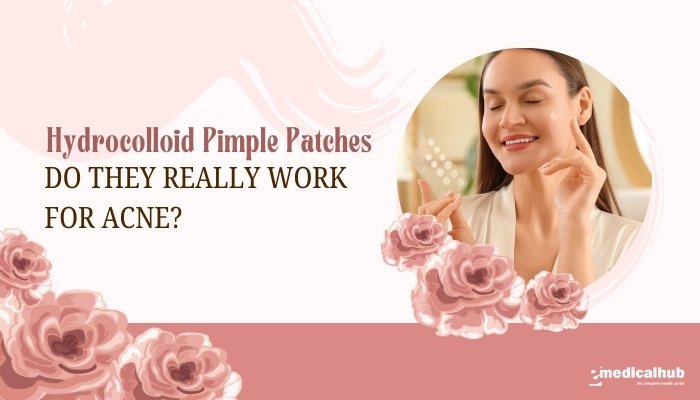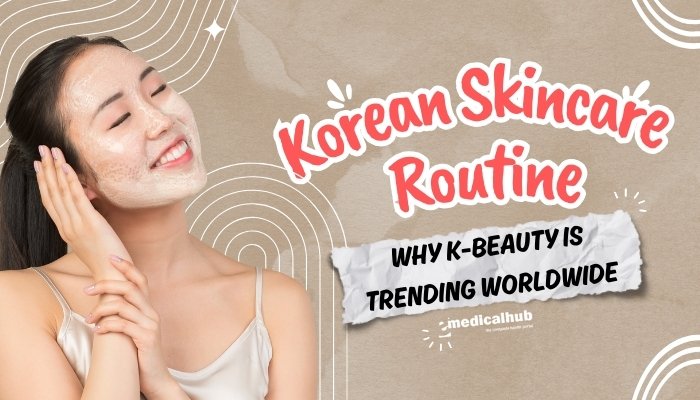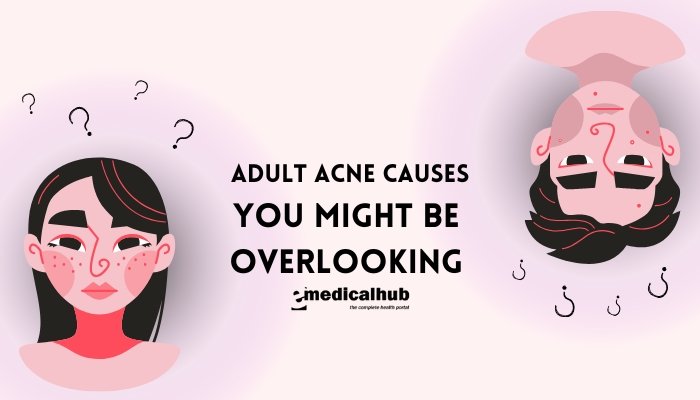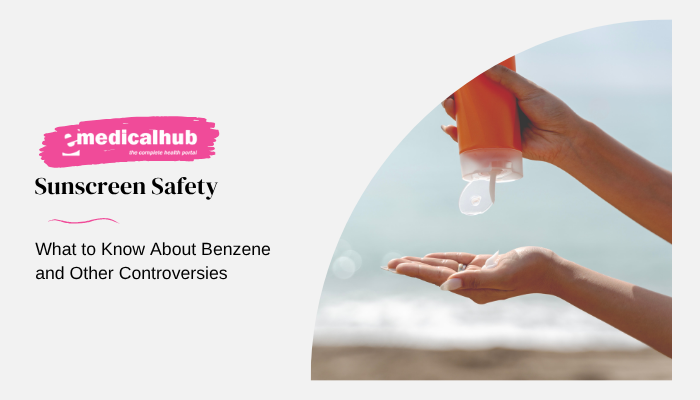Introduction
Acne is a widespread skin concern affecting adolescents and adults alike. It arises from clogged pores, excessive oil production, bacteria, and inflammation. While countless treatments – from topical creams to systemic medications – cater to different severities, one relatively recent innovation has stirred consumer interest: hydrocolloid pimple patches.
These small, adhesive stickers claim to speed up healing, reduce redness, and prevent picking. But do they really work, or are they just another trendy skincare gimmick?
This article examines the science behind hydrocolloid patches and their potential effectiveness in managing acne spots. We’ll explore how they differ from conventional spot treatments, the types of blemishes they might help, optimal usage tips, and relevant clinical findings.
While they are not a panacea for all types of acne, many users, dermatologists, and small studies attest to their utility for certain breakouts. If you’re curious about trying these patches, understanding their function and limitations is key to achieving realistic results.
Disclaimer: The information here is for general educational purposes. It should not replace personalized advice from a dermatologist or qualified healthcare professional. If you have severe or persistent acne, seek professional evaluation to determine the best treatment approach.
Understanding Hydrocolloid: What Is It?
Hydrocolloid dressings originated in wound care, primarily used in hospitals to help heal ulcers, blisters, and other exuding wounds. They are typically composed of a gel-forming agent—such as gelatin, pectin, or carboxymethylcellulose—bonded onto a flexible, breathable backing. When placed over moist lesions, the material absorbs exudate, forming a gel. This environment can protect the wound from external bacteria, maintain appropriate moisture, and potentially speed healing.
Role in Acne
When applied to pimples (particularly those that have “come to a head” or are weeping), hydrocolloid dressings can:
- Absorb Fluids: The hydrocolloid draws out excess fluid (like pus), flattening the lesion.
- Protect from Picking: Acting as a physical barrier, the patch helps reduce picking or further contamination.
- Support Healing: A moist microenvironment can aid the skin’s natural repair processes.
Though not originally designed for pimples, small circular “pimple patches” have become popular for this off-label adaptation.
How Do Hydrocolloid Patches Work on Acne?
Drawing Out Fluids
Pustules (pimples with visible pus) or open lesions exude fluid containing white blood cells and debris. Hydrocolloid adhesives absorb this fluid, turning it into a gel-like mass. This is why many people see a white or opaque spot on the patch’s underside after removing it – an indication that fluid or exudate has been pulled from the blemish.
Protective Barrier
Acne lesions can worsen if disturbed by hands, hair, or external pollutants. Pimple patches form a shield, preventing picking or scratching, thus limiting inflammation and potential scarring. By sealing the area, they also minimize exposure to bacteria or irritants.
Mild Anti-Inflammatory Effect
Although the patch itself doesn’t contain active medicaments (unless it’s a specialized version with added ingredients like salicylic acid), the occlusive environment may reduce local inflammation. The lowered exposure to air and irritants fosters a calmer environment for healing.
Limitations
- No Direct Bacterial Killing: Standard hydrocolloid patches do not have antibacterial agents. They rely on absorption and protection, not on actively fighting P. acnes.
- Surface Lesions Only: They might not help deeply inflamed cysts or nodules where fluid exudation is minimal.
- May Not Prevent Future Breakouts: Hydrocolloid dressings primarily address existing pimples, not underlying oil production or hormonal triggers.
Types of Acne Best Suited for Hydrocolloid Patches
Not all pimples respond the same. Generally, these patches work best for:
- Whiteheads or Pustules: Once a pimple forms a white or yellow top, the patch can absorb fluid and flatten the lesion.
- Superficial Lesions: Papules or small areas of broken skin might see less irritation with a patch on top.
- Post-Picking Spots: If you popped or disrupted a blemish (not recommended), a patch can help contain exudate and reduce scabbing or scarring.
Less Effective On:
- Cystic or Nodular Acne: Deep, large lumps under the skin lack a break in the surface for fluid to be absorbed.
- Blackheads: Blackheads are hardened sebum plugs; a hydrocolloid patch can’t effectively dissolve or dislodge them.
- Excessively Inflamed or Infected Lesions: In such cases, you might require prescription oral or topical agents.
Clinical Evidence and Dermatologist Opinions
Studies and Observations
While hydrocolloid usage for wound care is backed by decades of clinical practice, data specific to acne is more limited. However, some small-scale studies and anecdotal reports show positive outcomes:
- Case Reports: Indicate that patients with superficial pustular acne see faster resolution of spots and reduced picking.
- Comparative Trials: Some small trials comparing hydrocolloid patches to no treatment or other spot treatments found that those using patches reported quicker flattening and dryness.
- Consistency: A patch must remain on for sufficient time (usually several hours or overnight) for best absorption.
Dermatologist Endorsements
Many dermatologists consider hydrocolloid patches a handy tool for spot treatments, especially for clients who pick at their acne or require a quick fix for single lesions. They’re recommended as a mild, low-risk approach in combination with standard acne regimens (like topical retinoids or benzoyl peroxide). Most warn that patches alone won’t solve moderate-to-severe acne, but they can reduce short-term inflammation and scarring in targeted lesions.
Popular Varieties of Hydrocolloid Pimple Patches
- Plain Hydrocolloid Patches
- Contain no active ingredients, rely solely on absorption.
- Generally translucent, sometimes tinted to blend with skin.
- Hydrocolloid with Acne-Fighting Additives
- May incorporate salicylic acid, tea tree oil, or other ingredients to enhance antibacterial or exfoliating effects.
- Potentially more effective for inflamed pustules.
- Could cause mild irritation if you have sensitive skin.
- Microneedle Patches
- Tiny dissolvable microstructures (needles) that deliver active compounds (like hyaluronic acid or peptides) into the upper dermis.
- Might help certain deeper papules, though evidence is still developing.
- Often more expensive.
Factors to Consider
- Size and Thickness: Larger or thicker patches might be more visible but can hold more fluid. Smaller discrete patches are less noticeable for daytime wear.
- Adhesive Strength: Some stay on longer, even through showers or overnight.
- Skin Sensitivity: If you have very sensitive skin, watch for adhesives that might cause mild irritation.
How to Properly Use Hydrocolloid Pimple Patches
Step-by-Step Application
- Cleanse and Dry Skin
- Gently wash the area, removing excess oil or makeup.
- Let the skin dry thoroughly, as a damp surface affects adhesion.
- Select an Appropriately Sized Patch
- The patch should fully cover the blemish with some margin to seal edges.
- Apply Firmly but Gently
- Center the patch over the lesion, pressing down for a few seconds to ensure it sticks properly.
- Leave It On
- Most instructions suggest wearing for several hours or overnight (6–12 hours) for maximum effect.
- The patch may turn white or cloudy due to fluid absorption.
- Remove and Dispose
- Gently peel off. If the patch is fully saturated, you might see white residue.
- If the pimple is still weeping or not flattened, apply a new patch as needed.
Frequency and Duration
- Daily or As-Needed: Many apply once daily or overnight on persistent pimples.
- Monitor: If after repeated usage (2–3 days) the lesion remains severely inflamed, consider additional treatments.
Common Mistakes
- Applying on Dry or Non-Oozing Blemishes: A mostly under-the-surface nodule may not benefit significantly from the hydrocolloid’s fluid-absorbing property.
- Short Wear Time: Removing the patch too soon might limit results.
- Overuse: For large areas with multiple pimples, hydrocolloid patches can be helpful but might become impractical if you have widespread breakout.
Do They Work for Everyone?
Success Stories
Many find the patches convenient for controlling occasional breakouts. They help flatten day-old pimples, reduce the urge to pick, and absorb exudate quickly. Some see improved healing or decreased redness, especially for superficial lesions.
Potential Limitations
- Deep or Hormonal Acne: Cysts or nodules lying under the skin’s surface aren’t significantly impacted by a patch’s suction or absorption function.
- Persistent or Severe Acne: If you have frequent, extensive breakouts, you may need medical-grade solutions or prescription therapy.
- Allergic Reactions: Rare, but adhesives can irritate hypersensitive skin. If you notice persistent redness or rash around the patch, discontinue use.
Combining with Other Treatments
- Topical Anti-Acne Agents: People often use retinoids or antibiotic creams on unaffected areas while covering the pimple with a patch.
- Spot Treatments: Patches can replace or supplement drying lotions or benzoyl peroxide in certain cases.
- Lifestyle and Skincare: Balanced diet, stress management, and consistent gentle cleansing remain key for broader acne prevention.
Potential Side Effects or Concerns
Skin Irritation
Though generally gentle, some adhesives or added ingredients (like salicylic acid) can cause mild irritation or dryness. If your skin becomes itchy or red, remove the patch and try a different brand or skip usage.
Hygiene
Ensure you apply the patch with clean hands on clean, dry skin. Reusing the same patch or applying it to unclean skin can trap bacteria or sweat, potentially worsening inflammation.
Scarring
Patches may reduce the risk of scarring by discouraging picking. However, deeper cystic lesions might scar irrespective of superficial coverage. If your pimple is large or a cyst, see a professional for intralesional steroids or other advanced treatments.
Comparing Hydrocolloid Patches with Other Spot Treatments
Salicylic Acid Spot Gels
- Mechanism: Gently exfoliates, unclogging pores.
- Speed: May take a few days to see improvement.
- Limitations: Doesn’t physically protect from picking like a patch does.
Benzoyl Peroxide Creams
- Mechanism: Kills acne-causing bacteria, reduces inflammation
- Irritation: Can cause dryness or bleaching of fabrics.
- Use: Typically for short contact or recommended once or twice daily.
Prescription Topical Antibiotics
- Mechanism: Targets bacterial growth.
- Resistance Risk: Bacteria can adapt if used improperly. Often combined with other agents.
Hydrocolloid Patch Advantage
- Immediate Protective Barrier
- Less dryness or stinging than certain topicals.
- No risk of bacterial resistance in typical usage.
But for chronic or severe acne, dermatologist-led combos might be necessary.
Debunking Myths about Hydrocolloid Patches
- They “Suck Out” Entire Pimples
- Actually, they absorb superficial fluids; deeply rooted cysts or lumps remain unaffected.
- They Cure Acne
- They are short-term “spot fixes,” not systemic or comedolytic solutions.
- They Are All the Same
- Different brands or formulas vary in thickness, adhesiveness, and presence of active ingredients. Testing a few might help find your best match.
Integrating Hydrocolloid Patches into Your Routine
Step 1: Basic Skincare
- Gentle Cleanser: Use morning and night.
- Moisturizer & Sunscreen: Ensure daily hydration and UV protection.
- Avoid Over-Exfoliation: Especially if using patches with salicylic acid.
Step 2: Target Pimples
- Apply Patch: On open or whitehead pimples. Let it work overnight or for 6–8 hours.
- Use Other Topicals: For unaffected areas or after removing the patch from the lesion.
Step 3: Monitor Progress
- Check Each Lesion: Has it flattened? Drained? If a patch becomes saturated or lifts off, replace it.
- No Improvement After Several Days?: Switch to alternative spot treatments or consult a healthcare professional.
Frequently Asked Questions (FAQs)
- Are pimple patches safe during pregnancy?
Generally, yes. Most basic hydrocolloid patches don’t contain harsh chemicals. However, check if any added active ingredients might be restricted in pregnancy and consult a physician if uncertain. - Can I use makeup over a pimple patch?
Some patches allow for makeup on top, but coverage may appear uneven. If concealing, choose thin, translucent patches specifically designed for daytime wear. - Do hydrocolloid patches help blackheads?
Not typically. Blackheads involve hardened sebum in closed pores. Hydrocolloid mostly addresses moisture exudate from open or popped pimples. - Is it okay to wear them in the shower or overnight?
Yes, many are water-resistant, making them suitable for extended wear, including overnight. However, strong water flow may loosen them. - What if a patch irritates my skin or rips off a scab?
Discontinue use, let the area heal, and pick a gentler brand. Gentle removal is crucial to avoid pulling fresh scabs or irritated skin.
Conclusion
Hydrocolloid pimple patches have earned popularity for their ability to protect pimples and absorb exudate, especially for superficial or “whitehead” lesions. They serve as a low-risk, convenient measure to flatten isolated pimples, deter picking, and occasionally speed up healing. While they won’t cure widespread or cystic acne, these patches can be a helpful addition to a broader skincare or medical regimen.
Understanding what type of acne you have—whether it’s a moist lesion amenable to hydrocolloid absorption or a deeper cyst needing medical treatment—guides patch usage. If you find yourself benefiting from pimple patches, use them responsibly: ensure clean application, consistent wear time, and combine them with a balanced approach to skincare. For persistent, painful, or chronic breakouts, professional advice is invaluable for long-term management. Ultimately, hydrocolloid patches can be an excellent tool in your acne-fighting arsenal—just don’t expect them to replace proven topical and systemic therapies for more severe conditions.
References
- Lipke M. An armamentarium of wart treatments. Clin Med Res. 2006;4(4):273-293. [Though referencing warts, hydrocolloid usage parallels for moisture management]
- Bruggink SC, et al. The efficacy of hydrocolloid-based dressings in minor superficial skin lesions. J Clin Nurs. 2019;28(11-12):2101-2107.
- Goodman G. Acne and acne scarring – the case for active and early intervention. Aust Fam Physician. 2006;35(7):503-504.
- Draelos ZD. Cosmeceuticals for acne. Dermatol Ther. 2017;30(5):e12498.
- Lee YH, et al. Hydrocolloid dressing in wound care. Burns. 2019;45(1):71-80.
- Patel V, et al. Patch therapy for mild acne. J Dermatolog Treat. 2020;31(8):795-800.
- Baldwin HE. The interaction between diet and acne. J Clin Aesthet Dermatol. 2020;13(12):31-36. [Broad reference on acne triggers, though patches are a separate aspect]
- https://www.aad.org
- Caraa A, Booji E, Freedman R. The role of protective wound dressings and hydrocolloid adhesives in acne. J Drugs Dermatol. 2021;20(4):438-442.
- Trzeciak M, Rosińska D, Dobrowolska-Zachwieja A, et al. The safety and efficacy of various spot treatments in mild to moderate acne. Dermatol Ther (Heidelb). 2021;11(1):37-49.
- Bowe WP, Joshi SS. A dermatologist’s perspective on consumer pimple patches. J Cosmet Dermatol. 2022;21(5):1899-1906.
- Zaenglein AL, Pathy AL, Schlosser BJ, et al. Guidelines of care for the management of acne vulgaris. J Am Acad Dermatol. 2016;74(5):945-973.





